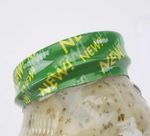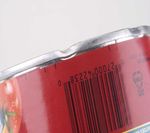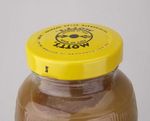SORTING 101: NORTH TEXAS FOOD BANK GUIDE TO SAFE FOOD SORTING - This guide is used as a reference for
←
→
Page content transcription
If your browser does not render page correctly, please read the page content below
SORTING 101:
NORTH TEXAS FOOD BANK
GUIDE TO SAFE FOOD SORTING
This guide is used as a reference for
volunteers to determine what to keep and
what to throw out when sorting through
canned food items according to both product
dates and quality in packaging.Seals
Ensure that tamper-proof seals are intact
Discard the item if the seal is pierced,
not adhered to the edge of the
container, or if there is visual evidence
of product contamination.
Seal
Look for plastic or metal caps on bottles Link
attached by small links to a ring fastened
around the bottle neck. If these
connecting links are broken, discard the
item. Ring
If shrink-wrap around bottles is
completely broken, discard the item. If
the seal is slightly damaged but shows
no tampering was possible, retain the
product.
A paper seal may be glued around the cap
and neck of a bottle. If this paper is torn,
discard the item.
Torn
PaperCans
Look for these red-flag indicators of a “bad can”
Dispose of cans with sharp
Squeezed Lid dents on the squeezed lid
Seam seams, if the dent extends
below the lid’s seam and
into the side of the can, or if
the dent peels back the lid
Sharp seam or bottom. Accept Peeled
cans with a long and flat Seam
Dent dent on a seam, unless the
dent is tipped inward.
Dispose of cans with dents that
Sharp cause sharp corners or sharp
Crease creases. If a fingernail applied to
the edge of the crease can
suspend the can, discard it.
Dispose of cans with dents in
the pull-top can lids except in
dried food cans when there is
no leakage. Dent
Discard cans with side
Deformed dents causing points at the
End ends of the crease and cans
that when the crease is so
deep it also deforms an end
of the can, causing it to
Pointed wobble. Also dispose of Crease
End of severely crushed cans with Folded
Crease the sides folded in on itself. Inward
Bulged Outward Dispose of swollen cans. You
Rust
can detect a slight amount of
Rust that remains after
swelling by pressing on the
wiping may indicate rust
end. If the end can be pushed
pitting that is deep enough
in, contamination is present.
to allow contamination.
Discard even if the end
Discard the can.
springs back after it is
released.Glass & Plastic
What to look for in a “good” jar
Pushed
Inward Check for a vacuum that makes the jar
airtight. An inward dished lid (usually
marked with a printed pop-up indicator)
shows the jar has a vacuum and is
airtight.
If a container is not vacuum-sealed, a screw- Plastic
cap and seal protect the contents from Seal
Screw
tampering and physical contamination. Cap
Discard the item if there is visual evidence of
contamination or if the seal is broken.
What to look for in a “bad” jar
Popped Outward Discard jars with a raised center that may
or may not spring back after being
depressed. Note: An item may have both
a pop-up seal indicator and a tamper-
proof band. If the band is broken and the
pop-up seal is intact, the item is
acceptable.
Dents
Discard glass jars with dents on the lids.
This indicates that glass chips may be in
the food.Labels
What to look for in a label
The U.S. Fair Packaging and Labeling Act prohibits the distribution of any food
item (except fresh fruit and vegetables) without a label. Labels shall contain:
• Common name of the product, for example, apple sauce
• Name and address of manufacturer, packer or distributor
• Quantity of the contents, for example, 10 oz.
• Common name of each ingredient, for example, salt or sugar
** Products with torn labels are acceptable when all the above information is
legible and complete.
** If ingredients are missing as shown below, you must dispose of the product.
Ingredients
missing
Many people are on restricted or specialized diets while others may be allergic
to individual foods. The ingredients list helps them avoid products which may
cause allergic reactions or are life threatening.
Safe disposal of unsafe products
NTFB recommends that unsafe items should be disposed of in a lockable
dumpster. If this is not available, open and pour out product or place in black
trash bags to ensure the food is not available for consumption.You can also read



























































